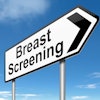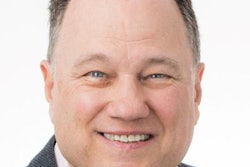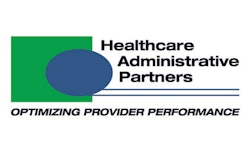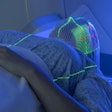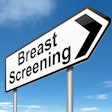
Radiology practices will face several economic and regulatory challenges in 2022, ranging from cuts in reimbursement and physician payments to new rules on surprise billing. They'll also use 2022 to prepare themselves for 2023, when they'll have to use clinical decision support (CDS) tools based on appropriate use criteria (AUC) when ordering advanced imaging exams.
"The upshot of these changes is that we're going to see radiologists struggle to remain independent," said Sandy Coffta, Vice President of Client Services at Healthcare Administrative Partners. "Some groups will dissolve. Some will be bought or acquired by their health system or by larger radiology aggregators."
"It's constant pressure that's pushing radiologists. We've already seen over the past 10 years the size of the average radiology group grow tremendously because it's very hard for a small group to stay in business in this environment. We're going to continue to see more mergers and acquisitions, and physicians and radiologists working for health systems. It will be a difficult environment for the independent radiologist," she explained.
 Sandy Coffta.
Sandy Coffta.In November, the U.S. Centers for Medicare and Medicaid Services (CMS) released its final Medicare Physician Fee Schedule (MPFS) fee schedule for 2022. The final rule sets the conversion factor per relative value unit (RVU) for the MPFS at $33.59 for calendar year (CY) 2022, a decrease of $1.30 from the 2021 MPFS conversion factor of $34.89.
The CMS also finalized its proposal to start the payment penalty phase of the AUC program on the later of January 1, 2023, or the January 1 that follows the declared end of the public health emergency for COVID-19. The rule would apply penalties to imaging providers who do not include AUC consultation information on claims for applicable advanced diagnostic imaging services.
The objective of AUC is to ensure that the right imaging tests are provided to patients at the right time and to reduce inappropriate or unnecessary advanced diagnostic imaging. The CMS will use data collected from the program to identify outlier ordering professionals who will become subject to prior authorization.
Cuts for radiology
According to the American College of Radiology (ACR), the CMS estimates the overall impact of the MPFS changes to radiology to be a 1% decrease. Interventional radiology would see an aggregate decrease of 5%, nuclear medicine a 1% cut, and radiation oncology and radiation therapy centers a 1% decrease. Some of the decrease is due to changes in RVUs, redistributive effects of the CMS proposed clinical labor pricing update, and phase-in implementation of the previously finalized updates to supply and equipment pricing.
The 2021 Consolidated Appropriations Act included a 3.75% adjustment to the 2021 conversion factor, which rolled back the payment cuts to radiologists. "If Congress does not intervene, the percent decreases mentioned above could be greater for CY 2022 for many physicians including radiology," the ACR said in a statement.
 Christina Berry.
Christina Berry."I think radiologists need to be aware of the number of changes that are coming," said Christina Berry, who is the team lead for economic policy at the ACR. "For example, the ACR conducted an analysis with the help of the Moran Company and found that if Congress does not extend the 3.75% conversion factor (to the MPFS final rule), radiology could expect to see a negative 5% impact on reimbursement. Radiation oncology would also expect a negative 5% impact," she adds. (Bipartisan legislation has been introduced in the House of Representatives to extend the 3.75% conversion factor for another year.)
Berry added that the ACR will review the clinical labor update that the CMS has finalized, and which is going to be phased in over a four-year period beginning in 2022. Bipartisan legislation also has been introduced in the U.S. House of Representatives that would block the CMS from updating pay for clinical labor staffers. The CMS wants to update wages for clinical staffers, such as mammography technologists. However, any changes are subject to budget neutrality, which requires Medicare to cut spending elsewhere to offset any increases in spending.
The ACR will focus efforts on member education in 2022 to prepare members for the beginning of the penalty phase as early as January 1, 2023, Berry says.
"With regard to CMS's clinical labor update, the ACR will continue working closely with our colleagues as part of the Clinical Labor Coalition, comprised of specialties that will be negatively impacted by the implementation of the clinical labor update, to review CMS's methodology and provide further information to CMS regarding accurate pricing for the different clinical staff," she added.
Clinical labor impact
To Tom Greeson, partner, Reed Smith LLP, the cuts are significant.
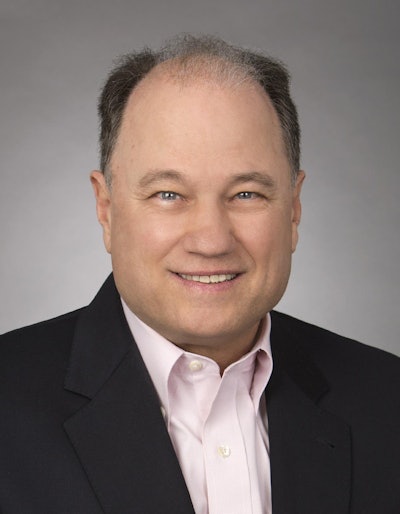 Tom Greeson.
Tom Greeson."The final Medicare physician fee schedule rule rate impact tabulation does not reflect all the cuts that are going to happen to specialists like radiologists," he said.
Greeson indicates that some of those cuts result from how Congress delayed a portion of the changes that increased payments to physicians who perform evaluation management services. Congress deferred a portion of those increases.
"Some of the cuts were delayed into 2022 and even 2023, as one of the hidden additional cuts coming. It wasn't referenced by CMS in the 2022 final Medicare physician fee schedule," he added.
Last year, Congress suspended the 2% Medicare fee sequestration reduction. Greeson hopes Congress will do so again this year.
"Other features of the rule will reduce payments to radiologists, including how CMS is now valuing the clinical labor cost of physicians. Those physicians who have significant clinical labor costs in their office practices are going to see an increase in their Medicare payments," Greeson explains.
"But with the application of budget neutrality to physician payments, there will be some reductions in reimbursement to other physician specialists," Greeson continued. "For example, interventional radiologists will see a significant reduction in their overall Medicare payments because they have high costs associated with disposable medical supplies, but not so much clinical labor."
Greeson believes the federal government has made a policy choice to increase overall payments to primary care physicians, which causes reductions in payment to physicians who don't benefit from those increases. "Not only do they not have the increases, but their payments are cut because of budget neutrality," he states.
Good news for HOPPS
The news has been better regarding the Hospital Outpatient Prospective Payment System (HOPPS), the ACR's Berry noted.
"We've seen favorable changes to the placement of the lung cancer screening code," she said.
Regarding CT Lung Cancer Screening, in the 2022 HOPPS proposed rule, the CMS proposed to place 71271 (low dose CT for lung cancer screening) in the lowest imaging without contrast Ambulatory Payment Classification (APC 5521), with a payment rate of $83.01.
The ACR raised concerns about the inadequate payments for CT lung screening based on flawed hospital data for several years. However, in the 2021 MPFS final rule, to preserve longstanding policy, the CMS will match CPT code 71271 with predecessor code 71250 and place CPT code 71271 in APC 5522. In addition, the CMS finalized its proposal to place G0296 (visit to determine lung LDCT eligibility) in APC 5822, with a payment rate of $76.42.
Regarding the Medical Physics Dose Evaluation, in the 2022 HOPPS proposed rule, the CMS proposed to continue to assign CPT code 76145 (medical physics dose evaluation for radiation exposure that exceeds institutional review threshold, including report -- medical physicist- dosimetrist) in APC 5611 (Level 1 Therapeutic Radiation Treatment Preparation) with a proposed payment rate of $130.19.
As a result of comments received by stakeholders, including the ACR, the CMS decided to reassign CPT code 76145 to APC 5612 (Level 2 Therapeutic Radiation Treatment Preparation) with a payment rate of $345.85. Based on input from their advisors, the CMS believes APC 5612 would be a more appropriate assignment with a proposed payment rate of $347.44.
The radiology surprise in surprise billing
Another challenge: On January 1, 2022, medical practices will have to comply with the federal No Surprises Act (NSA) unless their state has a similar law in effect. The legislation allows providers to receive a reasonable payment from insurers for services to non-network patients without putting patients in the middle of payment disputes.
At the end of September, long-awaited regulations that will govern the details of its implementation were issued and were met with displeasure by healthcare providers. The ACR wrote in its detailed summary of the rule that it is disappointed that the regulations "violate the intent of the No Surprises Act (NSA) by making the qualifying payment amount (QPA) the primary determinant of physician payment rates in the independent dispute resolution process. If the regulations are not changed, the result may be a downward trend of in-network payment rates and/or physicians being dropped from insurer networks."
"The concern that radiologists have right now, is that out of network payers will pay at the QPA, which is supposed to be their median rate for that service on January 31, 2019, adjusted for inflation," according to HAP USA's Coffta. "But none of those numbers are publicly available, so we really don't know whether the QPA is going to be reasonable. Most likely we'll get a handle on the numbers when we start receiving payments at the specified rate."
"Some radiologists don't contract with certain payers because the rates are so low. Getting paid at the median rate is not encouraging because we've seen what they've offered radiologists through the years," she added. "How reasonable is it to appeal these rulings, if the payer and the practice can't come to a resolution? The federal arbitration system escalates costs. Are radiologists going to pay $25 to get $5 more for an MRI... probably not."
Greeson says it appears that some payers, in reaction to the NSA, are modifying their participating agreements with physicians like radiologists. Payers are acting to renegotiate contracts with physicians to reduce payment levels, he indicates.
No more pandemic relief ... for now
Physicians and other healthcare providers were able to apply for additional grant funds from the U.S. Department of Health and Human Services (HHS) beginning on September 29, 2021, in response to the COVID-19 public health emergency.
"Unfortunately, applications for the phase IV distribution period of the provider relief fund grants closed at the start of November. They were targeting rural communities and groups that may not have gotten adequate relief from the earlier three rounds of grants," Coffta noted. "I am not aware of other federal opportunities at this point. But we do encourage people to look for state and local opportunities for funding. But right now, there's nothing significant on the horizon federally."
AUC penalty extension
Some good news: The penalty phase for Medicare's requirement that advanced imaging exams be ordered using CDS based on AUC has been pushed back to 2023, said Coffta, which is good news for radiologists. "This effectively gives us 2022 as a testing year. We are submitting data to Medicare. They will analyze it and tell radiologists how well their referring physicians are compliant with the regulation. This gives us a year to get valuable feedback on which of our referring doctors is not compliant. The challenge is how radiologists can do outreach to bring the biggest outliers into the fold."
Coffta suggests that radiologists reach out through emails or write letters to physicians they believe are not compliant, indicating to them that the radiologists will not receive payment for services if they do not comply. Berry added that the ACR also will keep up to date with further developments in the AUC.
Value challenges
Radiologists also face a challenge complying with the Medicare Accessibility and CHIP Reauthorization Act (MACRA), the federal program promoting quality in healthcare, and which replaces fee-for-service reimbursement.
Radiologists are not well equipped for a transition to value using alternative payment models, including the Merit-based Incentive Payment System (MIPS), according to Coffta. She indicates that many of the MIPS quality measures are geared toward patient-facing providers, which radiologists are not.
"Some measures that radiologists can report include mammography reminders and documenting the percentage of carotid stenosis. But both measures are expected to be eliminated by 2023. In general, the incentives for radiologists to comply with the program are not great -- with the maximum incentive historically below 2%," she said.
MARCA contention
If all of these issues aren't enough to distress radiologists, adding some contention to their work environment is the Medicare Access to Radiology Care Act (MARCA) pending legislation. If it becomes law, MARCA would provide payment to supervising radiologists for registered radiologist assistant (RRA) services performed in a facility setting. The act does not allow for independent RRA practice or payment.
But MARCA has had little support in Congress. The ACR remains neutral on MARCA. In a recent ACR member survey on nonphysician radiology providers (NPRPs), 60% of respondents said they do not support MARCA passage. But only 43% of the survey population, which represents 16% of ACR membership, opposed the use of NPRPs, such as nurse practitioners (NPs) and physician assistants (PAs), in their practices.
Greeson hopes that the ACR will support the enactment of state registered radiologist assistant and radiology practitioner (RA-RPA) assistant licensure laws in those states without such laws. In 2019, the CMS recognized that RAs and RPAs, who have more training, should be allowed to perform (level 3) fluoroscopic-guided tests, even when a physician is not in the room -- but the physician is immediately available to provide direct supervision -- as long as the RAs or RPAs acts within their scope of practice under state licensing laws.
Additionally, Greeson noted that the CMS amended the Medicare supervision rules in 2021 to permit nurse practitioners and physician assistants to supervise imaging studies with contrast. Unfortunately, most state NP and PA scope-of-practice rules do not authorize what Medicare now permits. He is advocating that the ACR and its state chapters support legislation to permit these midlevel practitioners to supervise contrast studies.
In addition, during a time of economic and regulatory upheaval for them, Greeson emphasizes it is "strategically" important for radiologists to solidify their relations with the hospitals where they work. Radiologists might consider new steps, such as fostering community screening programs or working with federally qualified health centers in the community and acting to have their efforts identified with their hospital, which would demonstrate their value to the hospital, Greeson suggests.
"Hospitals are increasingly tracking their ESG metrics -- environmental, social, and governance. These types of activities would put the next contract negotiation in a more positive light," he noted.

